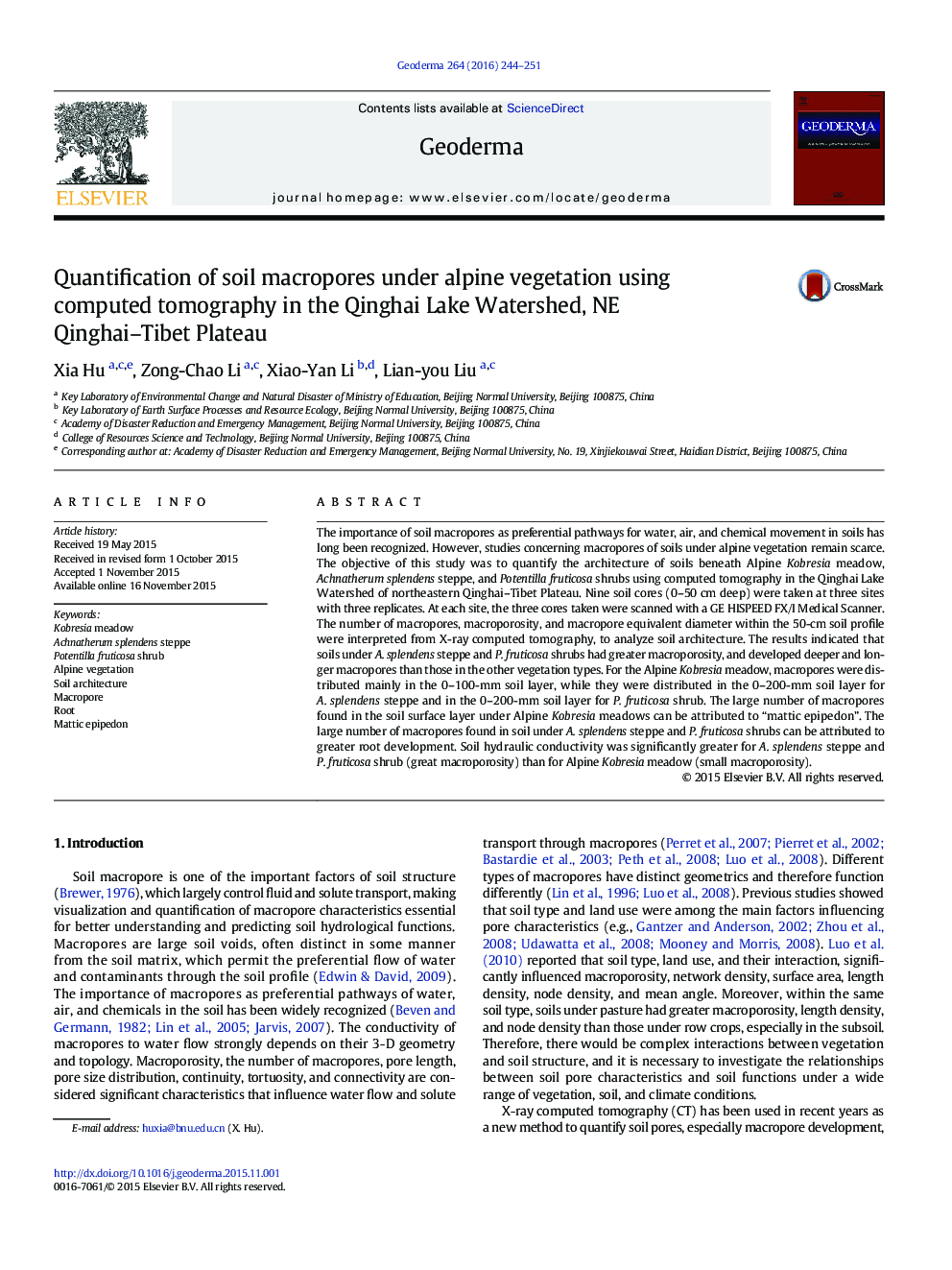| Article ID | Journal | Published Year | Pages | File Type |
|---|---|---|---|---|
| 4573102 | Geoderma | 2016 | 8 Pages |
•We study the architecture of soils beneath Alpine vegetation using computed tomography in the Qinghai Lake Watershed.•Soils under A. splendens steppe and P. fruticosa shrub developed deeper and longer macropores than soils under Alpine meadow.•The large number of macropores in soil surface layer under Alpine Kobresia meadow can be attributed to “Mattic epipedon”.•The large number of macropores in soil under A. splendens steppe and P. fruticosa shrub can be attributed to root development.•Soil hydraulic conductivity was greater for A. splendens steppe and P. fruticosa shrub than for Alpine Kobresia meadow.
The importance of soil macropores as preferential pathways for water, air, and chemical movement in soils has long been recognized. However, studies concerning macropores of soils under alpine vegetation remain scarce. The objective of this study was to quantify the architecture of soils beneath Alpine Kobresia meadow, Achnatherum splendens steppe, and Potentilla fruticosa shrubs using computed tomography in the Qinghai Lake Watershed of northeastern Qinghai–Tibet Plateau. Nine soil cores (0–50 cm deep) were taken at three sites with three replicates. At each site, the three cores taken were scanned with a GE HISPEED FX/I Medical Scanner. The number of macropores, macroporosity, and macropore equivalent diameter within the 50-cm soil profile were interpreted from X-ray computed tomography, to analyze soil architecture. The results indicated that soils under A. splendens steppe and P. fruticosa shrubs had greater macroporosity, and developed deeper and longer macropores than those in the other vegetation types. For the Alpine Kobresia meadow, macropores were distributed mainly in the 0–100-mm soil layer, while they were distributed in the 0–200-mm soil layer for A. splendens steppe and in the 0–200-mm soil layer for P. fruticosa shrub. The large number of macropores found in the soil surface layer under Alpine Kobresia meadows can be attributed to “mattic epipedon”. The large number of macropores found in soil under A. splendens steppe and P. fruticosa shrubs can be attributed to greater root development. Soil hydraulic conductivity was significantly greater for A. splendens steppe and P. fruticosa shrub (great macroporosity) than for Alpine Kobresia meadow (small macroporosity).
